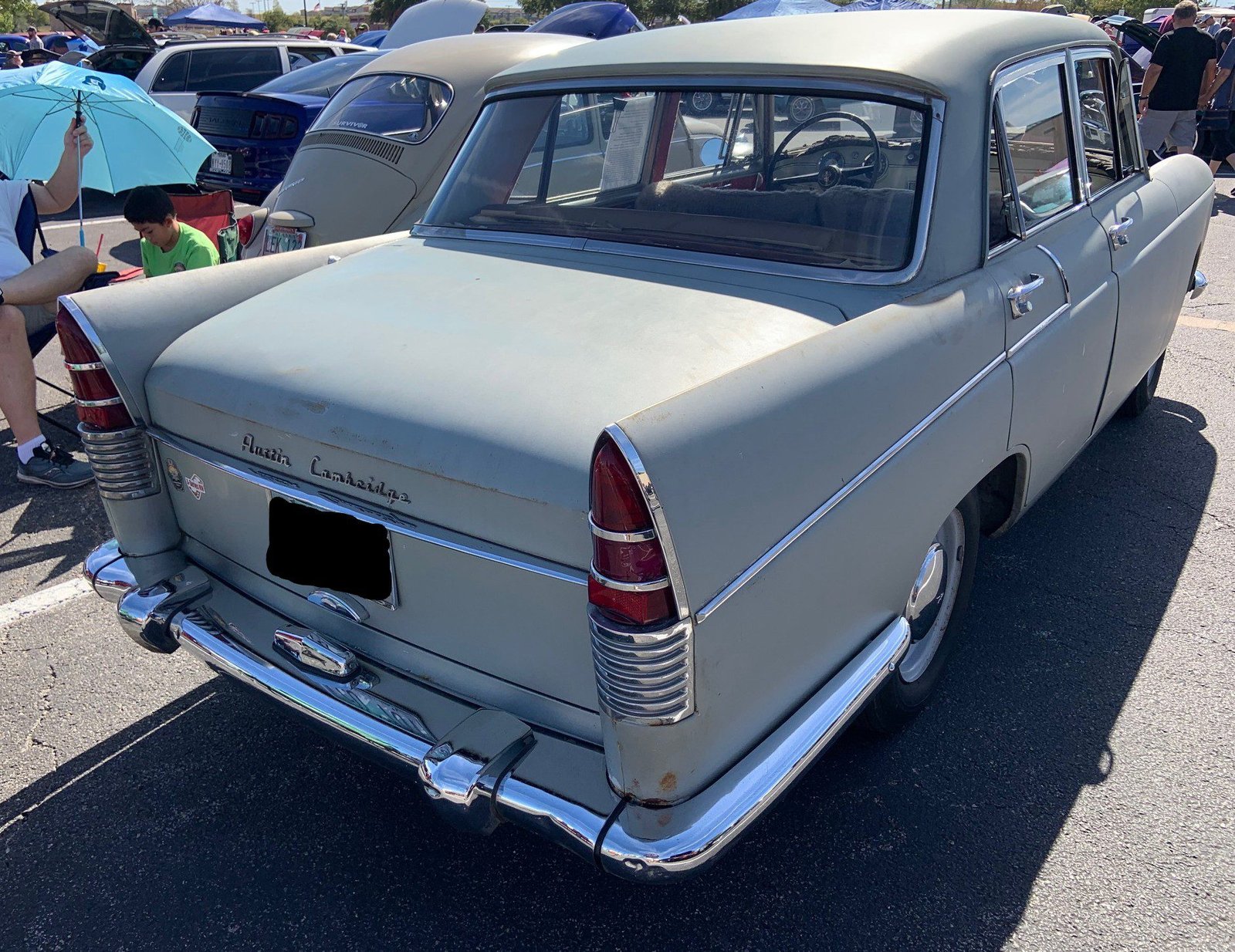Featured here is a fine looking 1960 Austin Cambridge A55 Mark II Saloon. The Austin Cambridge was a medium size automobile.

The Austin Cambridge was manufactured by the Austin Motor Company over several generations from September 1954 through 1969. The model was also offered to 1971 as a half ton light commercial vehicle.
The Austin A55 Cambridge Styling
The Cambridge A55 replaced the A40 Somerset with all new modern unibody construction. Styling was from Pinin Farina. Styling changes included a larger boot and larger rear window. The 1960 Cambridge was an A55 model. This was followed by the A60 model in 1961.
The A55 model was a slight remodel of the previous ‘pre-Farina’ Cambridge. The Italian styled Austin Cambridge had a flamboyant, European look. The new A55 had essentially the same 1500 cc engine except with the addition of an SU carburettor. Other than that the engine was the same. Pinin Farina’s design gave a very clean line at the car’s rear
Another version of the Cambridhe came out in 1960 which was the estate version (Countryman). The rear tailgate was split which allowed long cargo to be supported while still having the rear window closed.
Austin Motor Company and Several Mergers
The Austin Motor Company came into existence in 1905 by Herbert Austin of Longbridge, England. Of significance is that the company’s Austin Seven model influenced the design of light cars in Europe and Britain. The Austin Seven was built from 1923 to 1939.
Like with several independent automakers Austin would be a part of mergers. In 1952, Austin merged with Morris Motors Limited to become the British Motor Corporation Limited. While this formed one company, Austin Motor Company had it’s own separate identity.
Another major consolidation occurred in 1966 when Jaguar Cars was purchased and British Motor Holdings was formed. The mergers continued when in 1968 British Motor Holdings and Leyland Motors Corporation merged to become the new British Leyland Motor Corporation.
The Austin brand name continued to be used until 1987 by British Motor Corporation’s successors, British Leyland and Rover Group. After 1987 the brand was phased out.
In 2005, the Austin trademark was acquired by Nanjing Automotive, a subsidiary of MG Rover Group. , but is now owned by the Chinese.
Austin cars continued in production long after the other marques that formed BMC were discontinued, with only the MG name that was applied to some Rover models lasting beyond 2000.
1960 Austin Cambridge A55 Specifications
The engine on this 1960 Austin Cambridge is a 1500cc Inline Four Cylinder producing 55 HP. There is also a hand crank backup starter on the car’s front.
Transmission is a four speed manual.
Brakes are four wheel hydraulic drums.
Independent front suspension, coil springs and wishbones. Rear suspension by half-elliptic leaf springs.
Dimensions include a 99.2 inch wheelbase, 178.0 inch overall outside length, 63.5 inch width, 59.7 inch height. Curb weight about 2,490 lbs.
An interesting note is that about 70 percent of all A55 models produced were shipped to the U.S. This obviously increased sales volume therefore the car’s design would have to be one that appealed to American car buyers. As it turned out sales in the U.S. were negatively affected simply because the car wasn’t suited well for the higher speed interstate highways being constructed all over the country.
Related Auto Museum Online articles…
Reference material used for this article includes..Austin Cars 1948 to 1990 : A pictorial History by David Rowe..Complete Catalogue of Austin Cars From 1945 by Anders Ditlev Clausager.
The 1960 Austin Cambridge A55 Sedan is a rare car in the U.S. Current sales prices for examples in very good condition should be found in the $12,000 to $17,000 range. Condition, and mileage are the determining factors on these relatively lower price classics.
(Photos and Article copyright Auto Museum Online)

